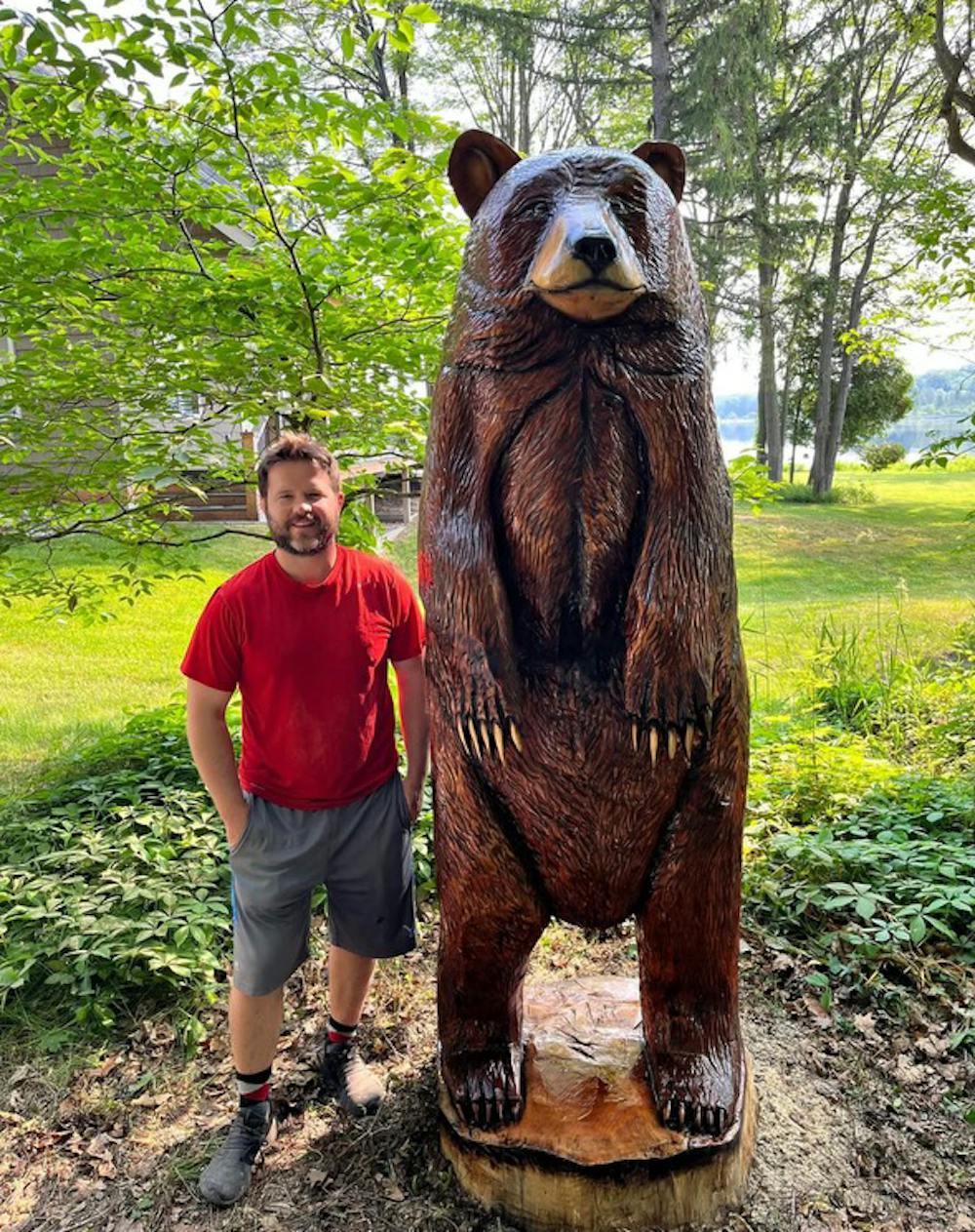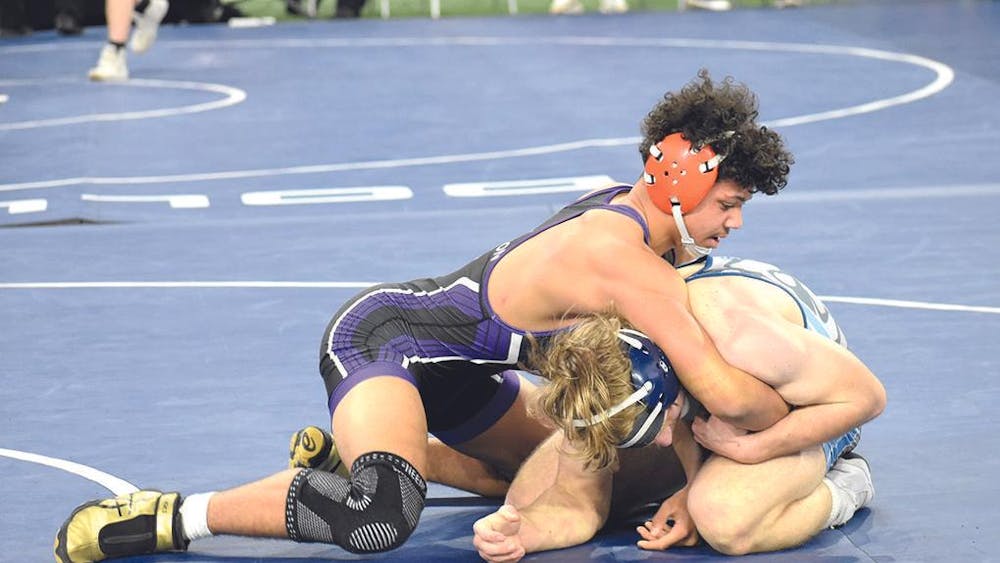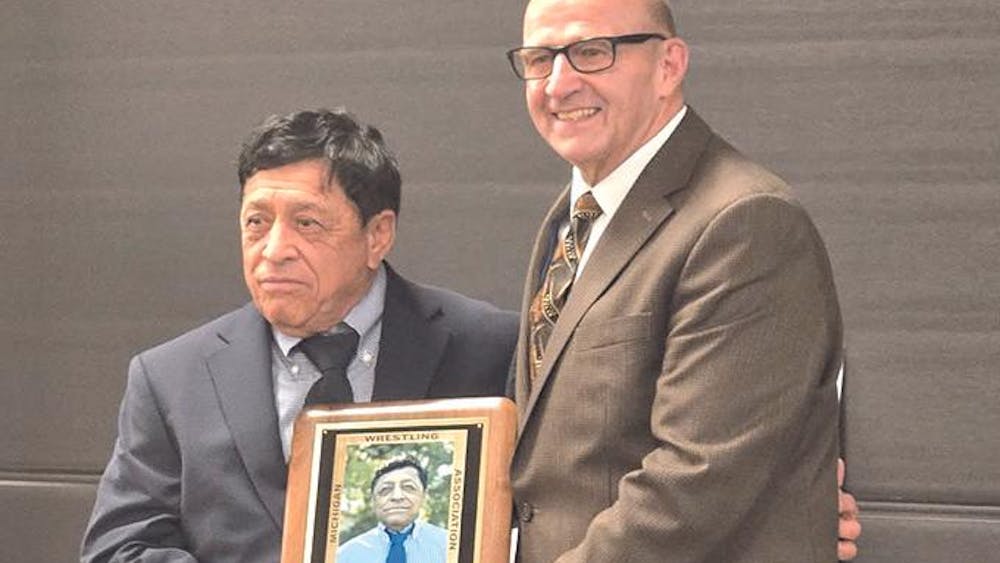Friday, July 11 and Saturday, July 12, there will be a “new festival in town,” when the Shelby Chainsaw Carving Festival will make its debut, and Village Manager Phil Morse hopes it will bring lots of visitors to downtown Shelby.
The 1st Annual Chainsaw Festival will run from 9 a.m. to 7 p.m. both days and include all-day chainsaw carving demonstrations (from five different carvers), food trucks, arts and crafts vendors and kids activities, Morse said. A special carving demo for kids will be held prior to live auctions both evenings, which will feature approximately 20-25 pieces that will have been made that day. “We hope the bids are high. This is how the carvers get paid,” Morse said.

“I knew I wanted to do something unique that isn’t done close by. I saw a carver at Lewis Farms, so I got in contact with him and asked if he could help me put a festival together. He put me in touch with Troy Boroff of Twin Lake,” Morse said. “As a result, the festival will have five expert carvers, including Kyle Thomas, owner of Red Rabbit Wood Carving and second-place winner in the U.S. Open Nationals chainsaw carving competition in Eau Claire, Wisconsin, last year.
The Oceana Echo caught up with Boroff, owner of Brushwood Carvings, who shared how he got started in the art of chainsaw carving. “My grandpa was Bill Langlois of Nunica, Mich. He was an accomplished artist in his own right, mainly painting and drawing. In 1984, he won the honor of having his painting of a trout featured on the 'Michigan Trout and Salmon Stamp' of the year,” Boroff shared.
“He was also a chainsaw carver, and watching him was what eventually led me to pursue chainsaw art myself. As a kid I would watch him for hours. Then in 2015 he passed away from cancer. Even though I’d always wanted to pick up carving, I’d never used a chainsaw in my life.
“I found a couple from northern Michigan who worked with me for two days and helped me understand the setup and technique. But chainsaw carving is hard. You’re not going to learn everything in two days. It’s a journey.
“It’s been constant learning, honing the craft. Like anything, if you stick with it, you’ll see some outcomes you like. I worked at it for two or three years while I was working at the courthouse in Muskegon. I’d get home at 5 p.m., and I’d start carving, sometimes until dark. I had a burning passion to get good at it.
“I finally got comfortable enough with my carving and had produced enough pieces that I did my first show in Grand Haven. I sold one thing and made $100. I knew I still had improvements to make. It took another three or four years before I had stuff I could consistently sell. It took going to a lot of shows and seeing what people liked and what they would buy.

“In the past two years, I’ve only done two shows. I’m able to make a living by taking online orders from people. My bestsellers are my cardinals, which stand about 14 inches high and my hummingbirds, which are about two feet tall. I try to have enough pieces to have a good variety and at several price points. My usual sale is between $30 and $300, more specialized or custom pieces start around $400.
“Some of my custom work involves creating a piece from a tree someone has had cut down or has fallen down. I have to be careful about bidding for those. You can get in a pinch. I’ve learned you have to be really observant of what is surrounding the tree (ground, other obstacles etc.) and what type of wood it is. Oak is a lot harder to carve,” Boroff shared.
“We (Thomas and Boroff) met through Facebook. I reached out to him and we’ve worked together. It helps us to work with another carver. You both improve and are able to bounce ideas off of each other. It also pushes you to try something new,” Boroff added.
As with any art form, there are special tools, techniques and tricks, Boroff said. Not every part of an art piece is cut with a large chainsaw. “You can get six-inch bar saws. With something smaller, you’re able to do fine details, like beaks or feathers on birds. I use a chainsaw for 90-95 percent of my pieces. But I do use a chisel for features like a bear’s eye and a Dremel tool for texture. It depends on how far you want to take it.
“For starters, a large project like a ten-foot bear takes a bigger saw and starts with what’s called ‘blocking out,’ working more in shapes to begin with. You start with the end product in mind. One of the biggest things I’ve had to figure out is the more you can keep things symmetrical, the better it looks. Your first cuts are very important and dictate how the rest goes.
“Another thing is remembering it’s a three-dimensional piece and carving all the way around. You need to look at it from all angles to balance it out. At first you just want to get something done, but you have to think deeper,” he said. “You also have to know when to quit. I can get caught up in the details, and I have to remember I’m trying to make a living, and there’s a fine line of knowing when to stop.”
Boroff said that 80-90 percent of what he sells at shows is sold to women. “If you can make a bear cute, it sells. Cute sells over realism,” he laughed.
Morse is excited about what having a festival of this kind could mean for the village. As of June 18 sponsor donations had reached $5,750. “We’re actively following up with volunteers, carvers, food vendors and others to ensure everyone is aligned and ready for the day,” he said. “If anyone is interested in helping, there are several roles to fill, and more sponsors are welcome!” Morse said. “The community’s support would make a big difference!” Please contact Morse at 231-861-4400 or email chainsawfestival@shelbyvillage.com for more information.
Visit Brushwood Carvings or Red Rabbit Wood Carving on Facebook to see some of what’s to come at Shelby’s first-ever Chainsaw Carving Festival. All carvers will have their personal information available at the festival as well.













